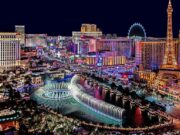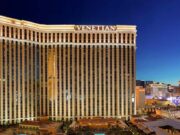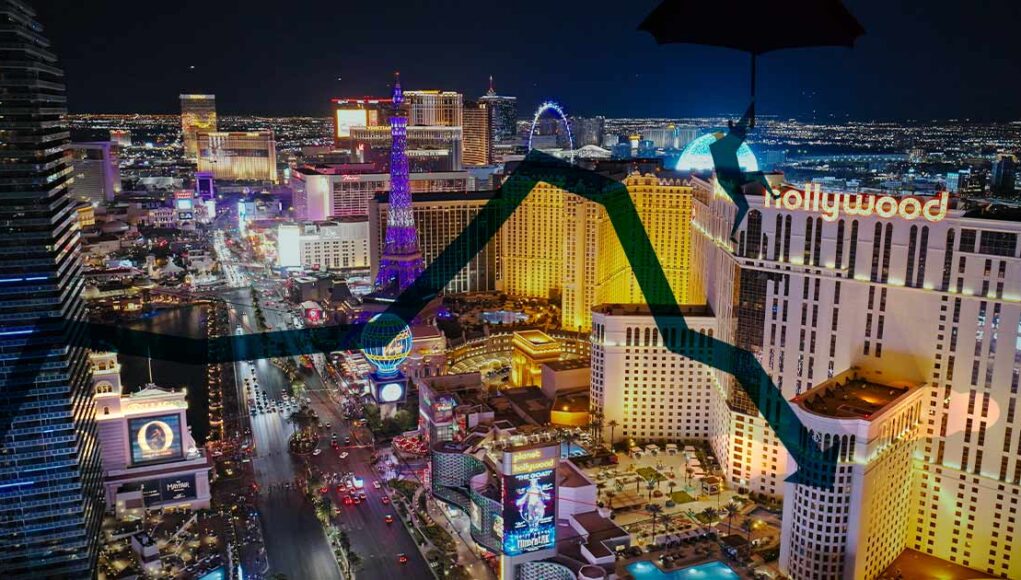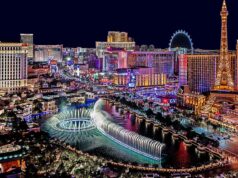If you’ve scrolled social media or read a few headlines lately, you’ve probably seen the dramatic claim: “Las Vegas is dead.” The Strip is “overpriced,” visitors are “done,” and the whole city is supposedly on the verge of collapse. It makes for good clicks, but the reality is a lot more complicated. Vegas isn’t dead—it’s just adjusting to a new normal after years of unusual circumstances.
The Real Reason Tourism Numbers Are Down
Let’s be clear—tourism is down in Vegas, but it’s down everywhere. The so-called “Vegas collapse” is not unique. After COVID, people had two years of stimulus checks, remote work flexibility, and cheap flights. That was the golden era of revenge travel. People had time and money, so Vegas (and every other tourist hub) saw record-breaking crowds.
Fast forward to now: the “gravy train” is over. People are back in the office, inflation is biting into budgets, and the easy money is gone. Families and casual tourists aren’t making four trips a year like they did in 2021–2022. That’s not a Vegas-only problem—it’s global tourism correcting itself.
What’s Actually Changing on the Strip
That doesn’t mean visitors don’t have legitimate complaints. Longtime regulars are noticing higher costs and fewer bargains:
Scroll through social media or click on a headline and you’ll hear the same recycled line: “Vegas is dead.” The Strip is supposedly empty, tourists are gone, and casinos are collapsing. But if you actually walk down Las Vegas Boulevard, that narrative falls apart in seconds. Sidewalks are crowded, pool decks are full, tables are busy, and the lines at celebrity restaurants and nightclubs are still there.
Vegas isn’t dead. What’s really happening is a correction after a few wild years of post-COVID travel—and most visitors wouldn’t even notice the difference.
The Real Reason Tourism Numbers Are Down
Yes, visitation has dipped. Through July, Vegas had about two million fewer visitors than last year. That sounds dramatic—until you remember why last year was so inflated in the first place.
During the pandemic and the two years after, people had stimulus checks, cheap flights, and the ability to work from home. Travel demand went through the roof. Vegas was part of that boom, just like Orlando, New York, and every major destination.
Now the easy money is gone, people are back in offices, and inflation is cutting into disposable income. Families aren’t booking as many trips. That’s not “Vegas dying.” That’s tourism everywhere cooling off from a sugar high.
The Strip Still Feels Busy to Most Visitors
If you came to Vegas for the first time today, you wouldn’t walk the Strip thinking, “Wow, this place is in decline.” You’d be shoulder to shoulder with other tourists at the fountains, waiting for your seat at Hell’s Kitchen, or elbowing through the crowd at a pool party.
The so-called downturn is something analysts track on spreadsheets—it’s not something most people experience on the ground. That’s why the doom headlines ring so hollow.
What Changed Since the Pandemic
That doesn’t mean regulars are wrong when they say the vibe has shifted. The Strip today feels more expensive and less about value:
- Resort fees and parking charges that add $50–100 a night even to “free” rooms.
- Table minimums that jumped from $5–10 to $25–50 at most properties.
- Food prices that turned buffets from $20 traditions into $50 brunch luxuries.
- Service cuts that make free drinks harder to come by.
- Show tickets that now run hundreds per person.
This isn’t decline—it’s corporate strategy. Big resort operators are chasing higher-end customers, and that shift has left some longtime visitors feeling priced out.
Locals’ Casinos Are Thriving
While the Strip sorts out its identity crisis, locals’ casinos and neighborhood spots are having a moment. Station Casinos has been pulling in record revenue thanks in part to killer food and drink deals that feel closer to the “old Vegas” people miss.
Think steak specials, seafood nights, happy hours that don’t require a second mortgage, and promotions that reward regulars. Red Rock, Green Valley Ranch, Sunset Station, and the new Durango Casino are drawing younger crowds along with locals who want value without the Strip hassle.
Neighborhood bars are packed too. From karaoke nights to football watch parties, they’re filling up with people who still want Vegas entertainment without Strip-level pricing. For a lot of locals—and savvy tourists in the know—these places now deliver the best bang for your buck.
Downtown is also benefiting. With lower hotel rates, friendlier table minimums, and a mix of modern amenities and old-school character, Fremont Street is pulling in visitors who want the Vegas vibe without the Strip price tag.
Conventions and Events Still Drive the Strip
The other piece most fearmongering headlines miss? Events. Las Vegas still leads the world in conventions and mega-events. The Raiders, the Golden Knights, F1, massive concerts, UFC cards—those weekends pack the Strip wall to wall.
The upcoming Formula One race alone is projected to pump close to a billion dollars into the local economy. Add in packed conventions like CES, SEMA, and SHOT Show, and it’s clear Vegas still dominates the calendar.
The Bottom Line
Vegas isn’t dead. It’s evolving. Prices are higher, sure. The Strip is chasing a more premium crowd, no doubt. But the city as a whole is still buzzing—tourists are here, conventions are rolling in, and locals’ casinos and bars are thriving with crowds who want value.
For most first-time visitors, none of this feels like decline. They’ll still leave saying what people have been saying for decades: “There’s nowhere else like Vegas.”
For middle America, that makes the Strip harder to justify. As one repeat visitor put it, “Vegas is really pricing people out.” That frustration has fueled the “Vegas is dead” narrative.
But here’s the kicker: gaming revenue is still strong. Nevada has seen more than 50 consecutive months of $1 billion+ in gaming wins, averaging $1.3 billion over the past year. The Strip isn’t tanking—it’s recalibrating.
The Convention and Events Lifeline
One thing the doom headlines leave out? Conventions and events. Vegas is still the convention capital of the world, and events like Formula One, Raiders home games, concerts, and trade shows continue to pack the city. The upcoming F1 race alone is projected to generate nearly a billion dollars in economic impact.
Sure, your average July weekend may feel softer than it did two years ago. But look at the event calendar, and you’ll see why hotels and casinos are still betting big on the future.
Downtown and the Locals Market Tell a Different Story
While the Strip has hit some bumps, downtown and the locals market are thriving. Boyd Gaming and Red Rock Resorts are reporting record revenues. Downtown offers cheaper rooms, lower table minimums, and a vibe that feels closer to the Vegas of old—something both locals and savvy tourists are catching onto.
It’s not that people don’t want Vegas. They just don’t want $50 parking and $25 blackjack. And downtown is filling that gap.
The Bottom Line
Vegas isn’t dead. Many of the strip casinos are overpriced for some, sure. It’s adjusting after the COVID travel boom, definitely. But casinos are still making money, the convention pipeline is full, and new mega-events keep coming.
The Strip will eventually have to decide if it wants to keep chasing high-end whales or make the experience accessible again to the average visitor. But don’t buy the fearmongering. Vegas isn’t going anywhere—it’s just changing, like it always has.






















